
Nội dung bài viết / Table of Contents
Edible flowers have been used as decoration and ingredients in many different cuisines for ages. Although not all flowers are safe to eat, some of them can offer a fun and colorful twist to the flavor. Chefs from all over the world now use them as garnishes, infuse them in beverages, and make signature dishes out of them. Edible flowers benefit us in many ways. However, a lot of people still remain skeptical about the safety and values of those ingredients.
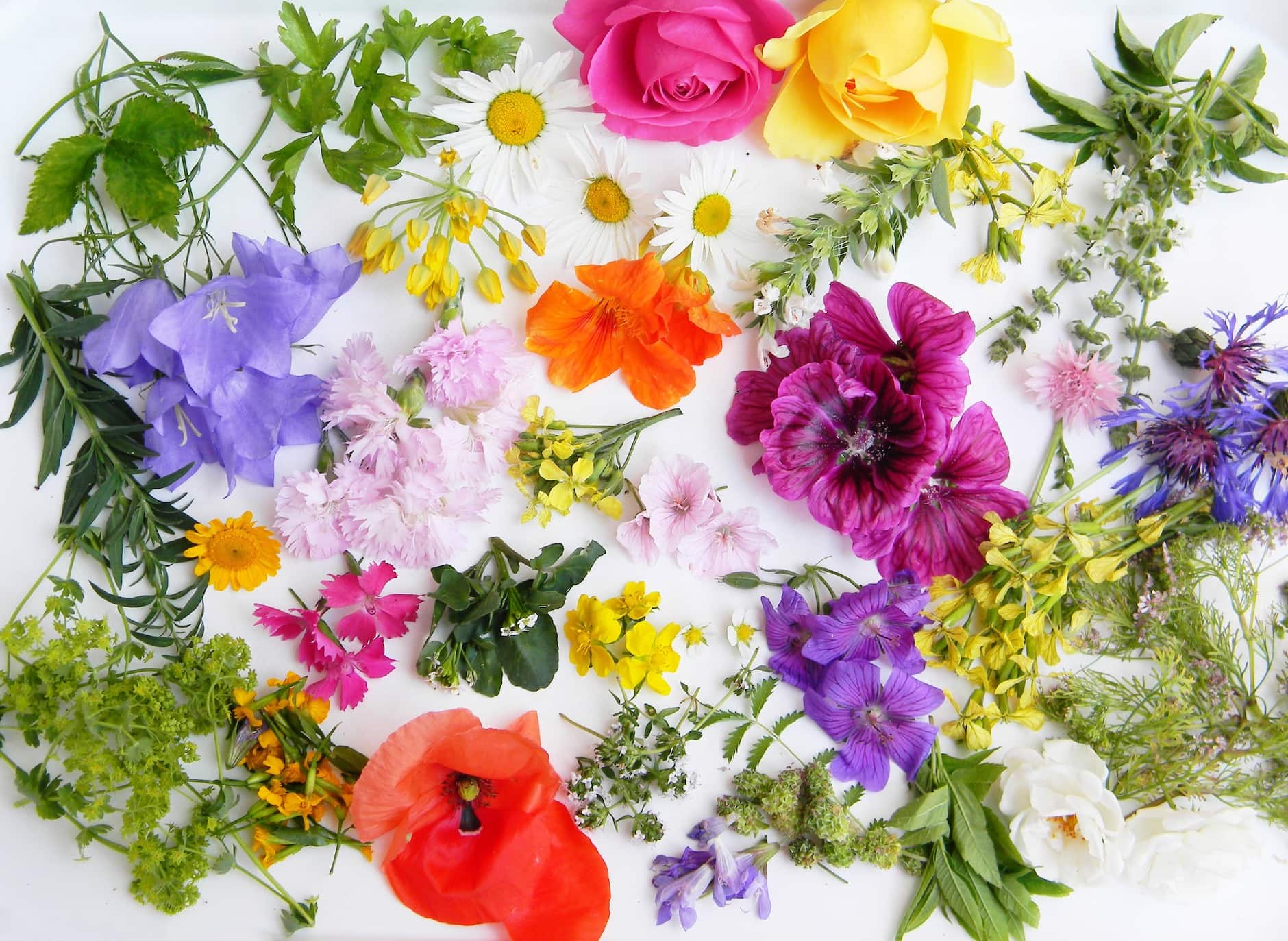
Credit: Farmers’ Almanac
Do edible flowers actually have nutritional benefits, or are they just here for the #looks and Instagram stories? Scroll down to learn more!
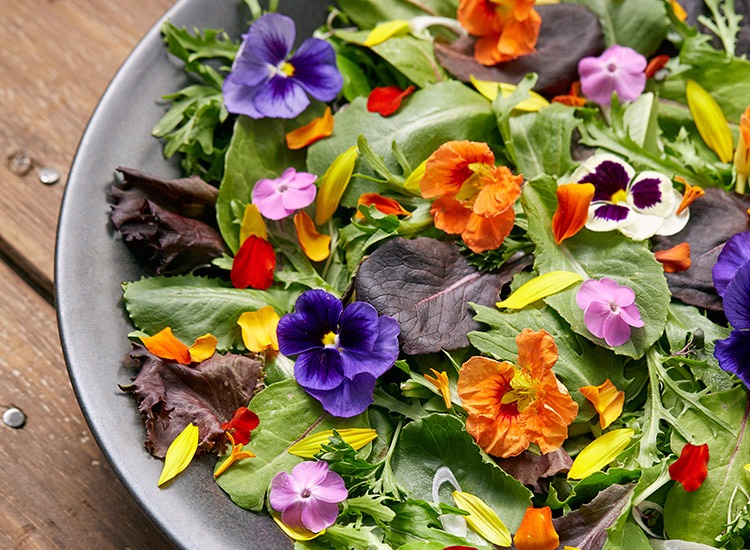
Credit: Garden Gate Magazine
There are many flowers that are safe to eat, each with their own unique taste and properties. Here are 12 popular edible flowers and how to eat them:
Allium flowers are the blossoms that grow from leeks, chives, garlic, and onions. They have a very mild garlic flavor that would make a great addition to savory dishes.
Calendula or also known as marigold, commonly has citrusy flavor with slightly pepper aftertaste. They usually make a great addition to salads and teas.
Chamomile has gentle nodes of apple and sweetness. It is known to be incredibly soothing when brewed into teas, hence why many people drink them before bed.
Daisy petals have a unique bitter taste that does not overpower other flavors, making them a great garnish for salads.
Elderflower petals have a strong, perfumy scent that almost tastes like a pear with nodes of lychee. Its fruitiness makes them often mixed into alcoholic beverages and syrups.
Hibiscus flowers are lemony, tart, and sweet. This is what you might reach for when you want to add a refreshing touch to your next batch of homemade ice cream and tropical drinks.
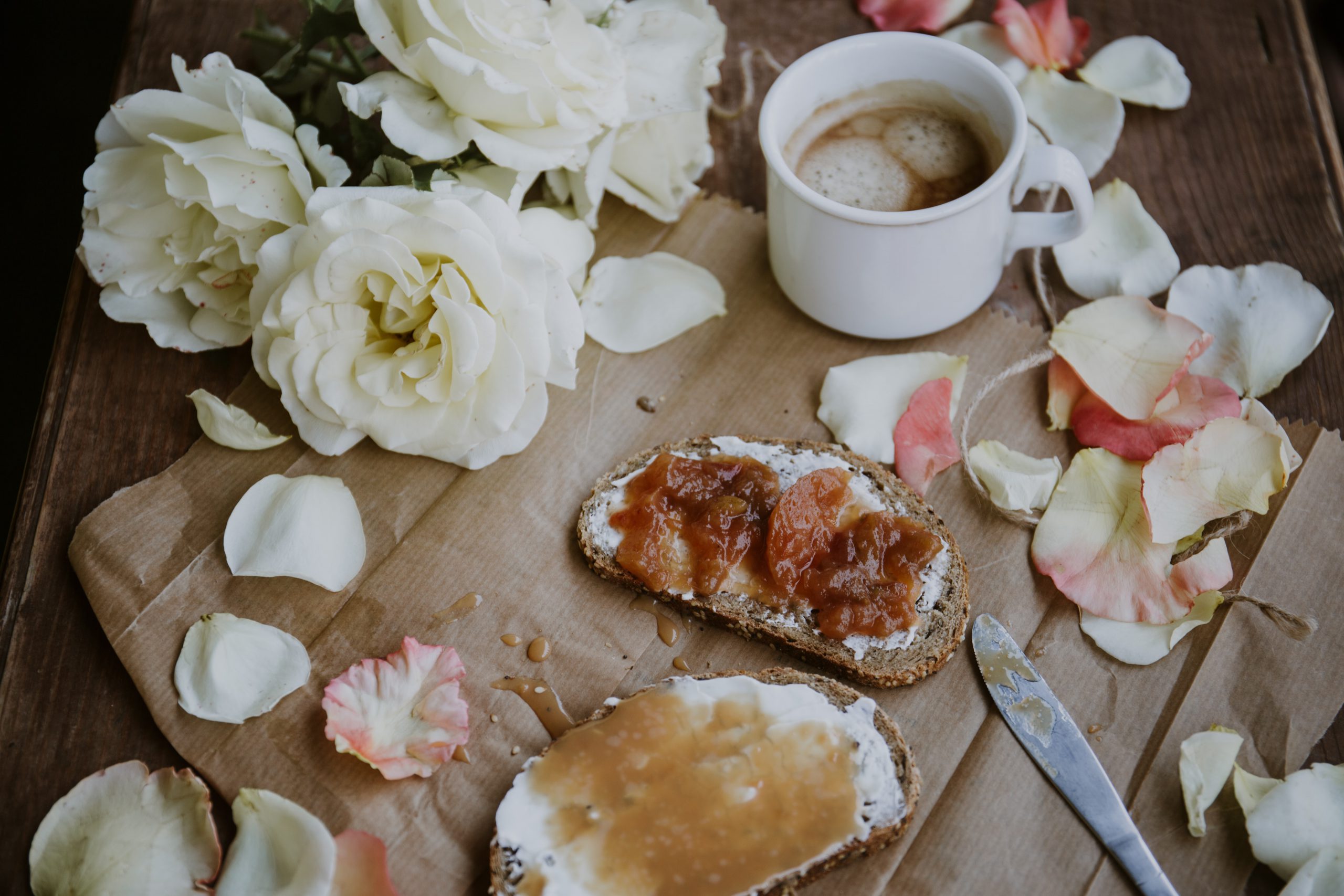
Credit: Alisa Anton on Unsplash
Jasmine is extremely popular across Southeast Asia. People often describe their scent as “a refreshing massage at the day spa.” Although they are most commonly made into teas, some chefs also make them into vinaigrettes for salad dressings.
Lavender is very versatile. They can be made into cakes, lamb chop rubs, ice creams, and many more. Lavenders are extremely fragrant and have strong mint citrus nodes.
Nasturtium tastes similar to watercress with a slight mustard aroma. They are quite spicy and peppery. The petals can be made into hot sauce, infused into vinegar, and mixed into a beautiful summer salad.
Rose is also very popular and versatile. Rose petals can be made into candies, syrups, jams, baked into desserts, and infused into so many things. They smell very floral and have a slightly sweet taste.
Squash blossoms have a mild taste of zucchini. Commonly, squash blossoms are made into savory dishes by stuffing them with cheese, meat, and rice, or straight up frying them in thin batter.
Violet flowers have a musky sweet smell and a bitter flavor. Other than garnishes, they are often transformed into beautiful purple jellies, sweet syrups, and frostings.
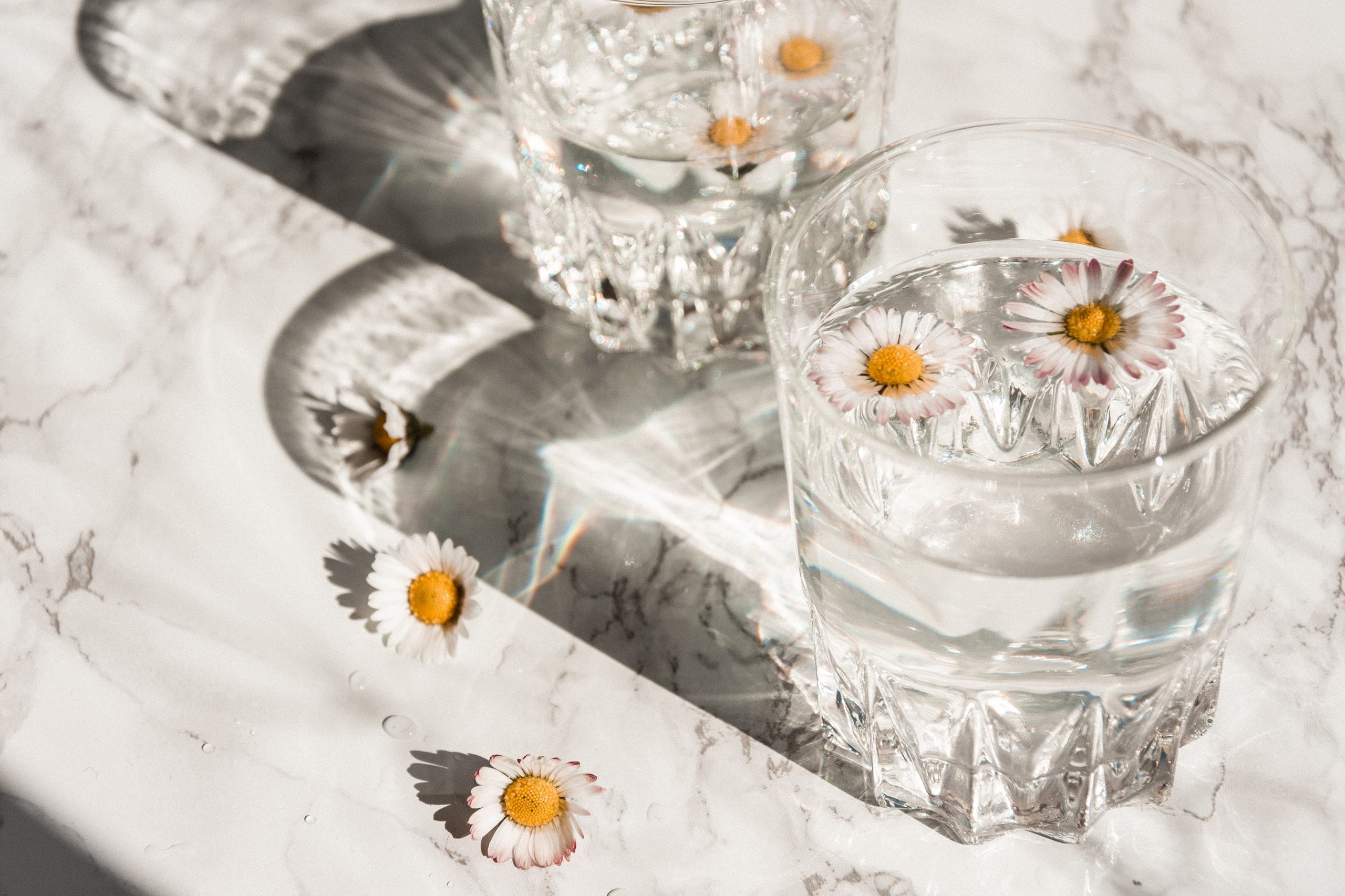
Credit: Camille Brodard on Unsplash
There is no doubt that edible flowers are pretty. Not only are they aesthetically pleasing and add a unique burst of flavor to your dishes, but they are also nutritious and valuable for wellness practices.
According to Dr. AS Prakruthi, consultant at Prakruthi Holistic Ayurveda in Bengaluru, edible flowers are a “promising source of minerals, antioxidants, vitamins, and dietary fiber.” In addition, they are also particularly rich in phytonutrients and flavonoids that are beneficial to the body. Roses and lavenders are especially abundant in vitamin A, C, and E. Flowers like chamomile and jasmine even have therapeutic properties, making them an effective ally for de-stressing, anxiety management, and relaxation.
The minimum standard for edible flowers is the ones that are organically farmed and harvested. Do not buy the ones that are non-organic because they have a risk of chemical contamination from the pesticides used.
In addition, it is a good idea to plant your own. You can use organic-certified aids to help your edible flowers flourish, such as biopesticides and fertilizers. However, you need to make sure that they are not growing in a polluted area (e.g. side of the road) because smog from vehicles can also contaminate your plants. If you are concerned about this, consider exclusively growing them indoors. Resilient kinds such as calendula, nasturtium, lavender, and viola can thrive indoors when they are properly cared for.
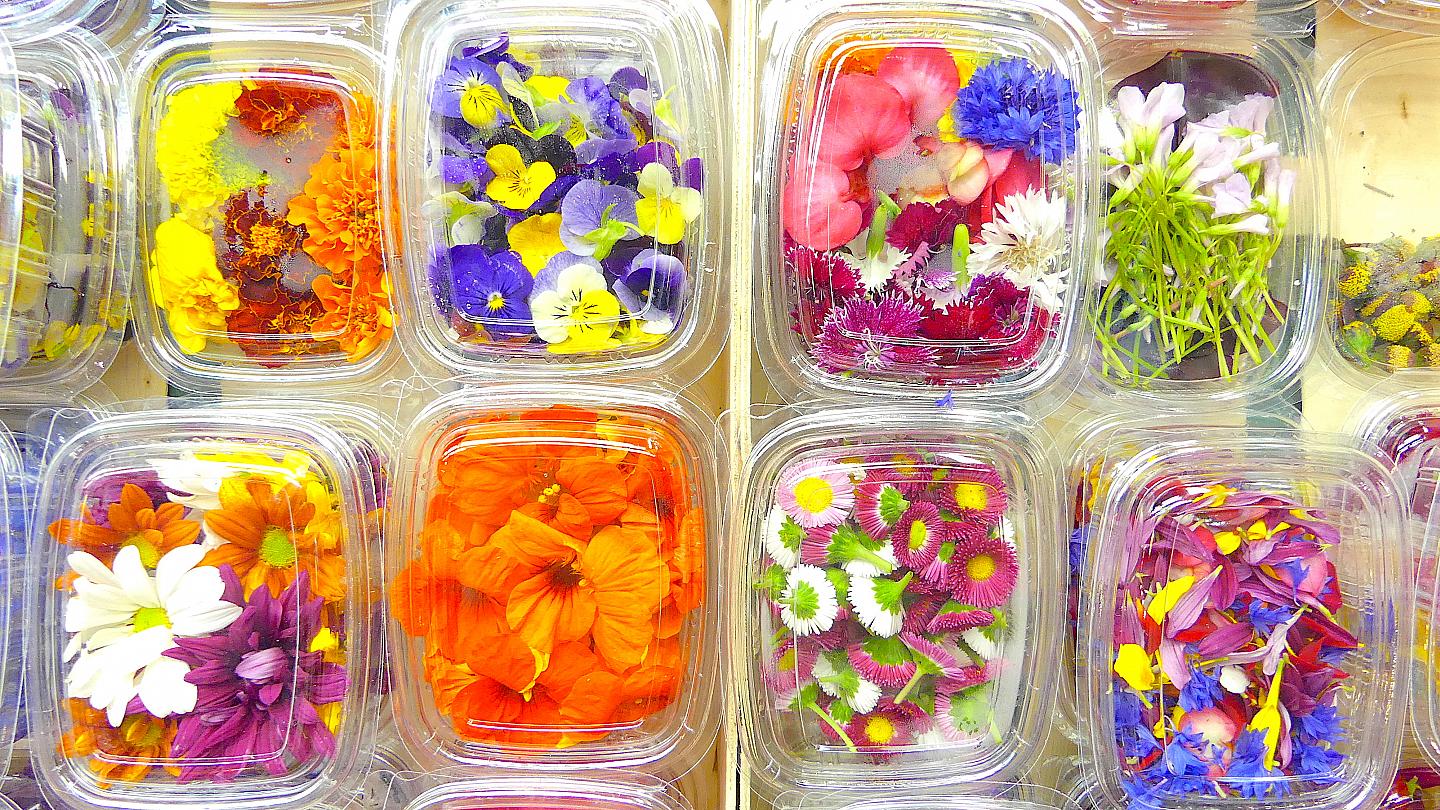
Credit: Euronews
Either you choose to buy edible flowers from the store or harvest them from your own garden, make sure to wash them carefully in water before incorporating them into your dishes. Soaking them in fresh, cold water for a few minutes can also lure out any tiny insects and dirt that might still be left behind, as well as make wilted petals plump again.
Edible flowers, just like fruits and vegetables, are actually best eaten right after they are harvested. However, since that is often not possible in many cases, properly storing them is essential to have their taste, aroma, and qualities preserved. First, line a damp paper towel on the bottom of a plastic container, add your flowers on top, then close the lid to stow away in a refrigerator. Check every couple of days for wilted flowers, and always keep them moist by either misting some water or changing the damp paper towel lining.
Lastly, always do your research on the dos and don’ts of edible flowers. Some varieties require their stamens to be removed before eating, while for others it is unnecessary. Only eat flowers that are known to be of the edible variety, and never attempt to consume anything which safety is questionable.
Other than the common usage listed above in the “Popular Varieties & Uses”, you can absolutely get creative with edible flowers. Edible flower petals with vibrant colors can also be used as a natural food coloring for any of the fun beverages and baked goods anyone would love. After learning about their color, aroma, and flavor profile, you can go wild and play with them however you wish.
For instance, you can infuse them in vinegar and oils to make beautiful, antioxidant-rich salad dressings, or experiment with making creams, jellies, and jams out of them. Mixing tart, citrusy flowers like elderflower or hibiscus into alcoholic beverages in the form of infused syrups is also a good idea to impress your guests. Rose and lavender in particular make very exquisite macarons, cookies, cakes, puddings, or a fancy popsicle.
Finally, sticking to traditional, good-old recipes is also a good way to transform them into your family’s favorite comfort food: stuffed squash blossoms, flower-topped focaccia, and spring garden frittata.
Edible flowers are gorgeous and safe to eat. They are jam-packed with micronutrients and can elevate your dishes to the next level. When incorporating flowers into your home cooking, make sure to purchase organic ones to avoid contamination risks. Or even better, plant them in your garden and use only biopesticides when needed. Either way, always wash them thoroughly before use and never forget to store leftovers properly.
Lara-Cortés, E., Bautista-Bañios, S., Jiménez-Aparicio, A., & Osorio-Díaz, P. (2013, September). [Nutritional content, functional properties and conservation of edible flowers. Review]. Archivos latinoamericanos de nutricion. https://pubmed.ncbi.nlm.nih.gov/25362819/.
Dickman, A. (2021, May 20). Flower Power! 27 Edible Flower Recipes. Brit + Co. https://www.brit.co/edible-flower-recipes/.
Emily, E. (2020, November 15). How to Use Edible Flowers. This Healthy Table. https://thishealthytable.com/blog/edible-flowers-how-to-use-them/.
KR, S. (2018, July 3). Add flower-power to your daily diet: Lavender, dandelion, hibiscus are packed with antioxidants, vitamins. The Economic Times. https://economictimes.indiatimes.com/magazines/panache/add-flower-power-to-your-daily-diet-lavender-dandelion-hibiscus-are-packed-with-antioxidants-vitamins/articleshow/64836733.cms?from=mdr.
Lu, B., Li, M., & Yin, R. (2016, July 29). Phytochemical Content, Health Benefits, and Toxicology of Common Edible Flowers: A Review (2000-2015). Critical reviews in food science and nutrition. https://pubmed.ncbi.nlm.nih.gov/26462418/.
Mackinnon, J. (2017, October 4). Floral Cuisine: 4 Pieces of Advice On How To Use Edible Flowers In Your Cooking: Feature. Indonesia Tatler Dining. http://dining.indonesiatatler.com/features/floral-cuisine-4-pieces-of-advice-on-how-to-use-edible-flowers-in-your-cooking.
Maenhout, V. (2019, July 19). Edible Flowers & How To Grow Them. Food Unfolded. https://www.foodunfolded.com/article/edible-flowers-how-to-grow-them.
Rop, O., Mlcek, J., Jurikova, T., Neugebauerova, J., & Vabkova, J. (2012, May 31). Edible flowers–a new promising source of mineral elements in human nutrition. Molecules (Basel, Switzerland). https://pubmed.ncbi.nlm.nih.gov/22728361/.
Takahashi, J. A., Rezende, F. A. G. G., Moura, M. A. F., & Dominguete, L. C. B. (2019, December 2). Edible flowers: Bioactive profile and its potential to be used in food development. Food research international (Ottawa, Ont.). https://pubmed.ncbi.nlm.nih.gov/32036873/.